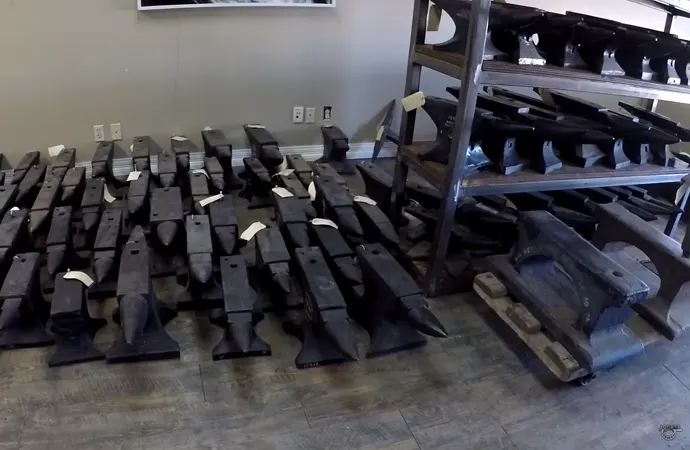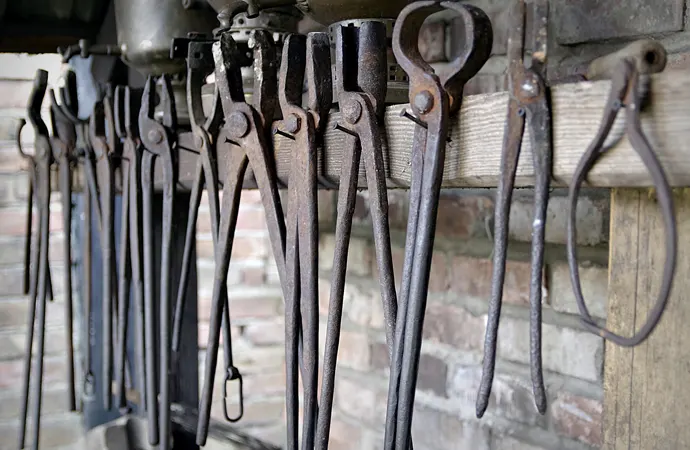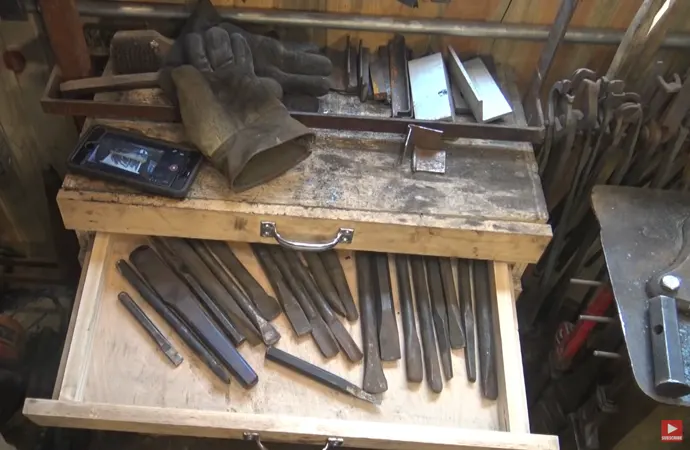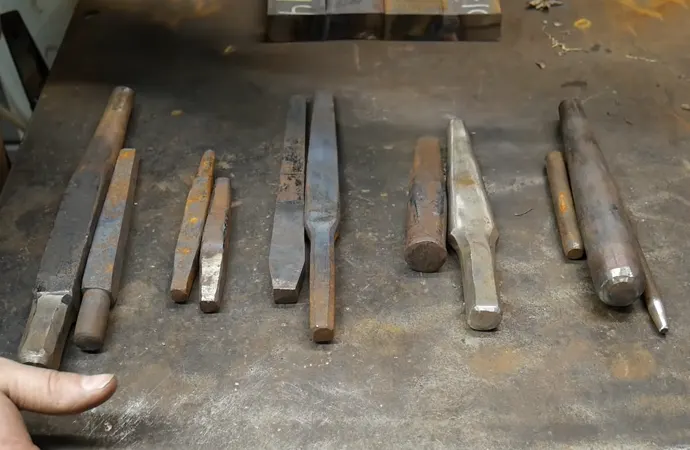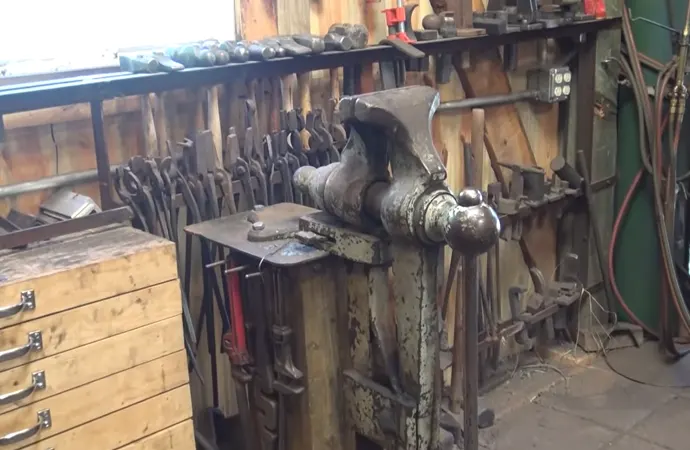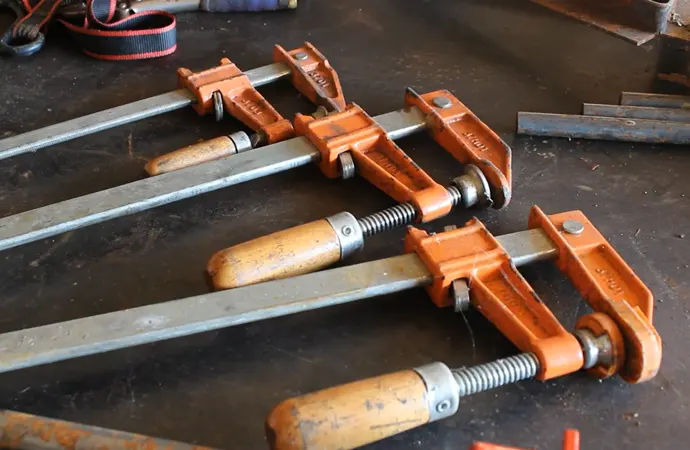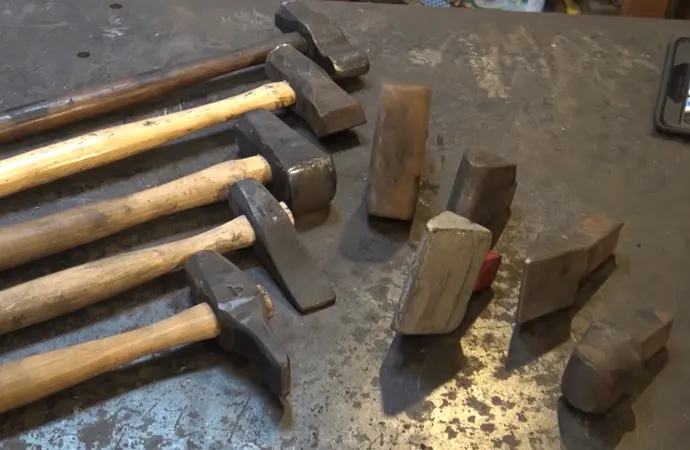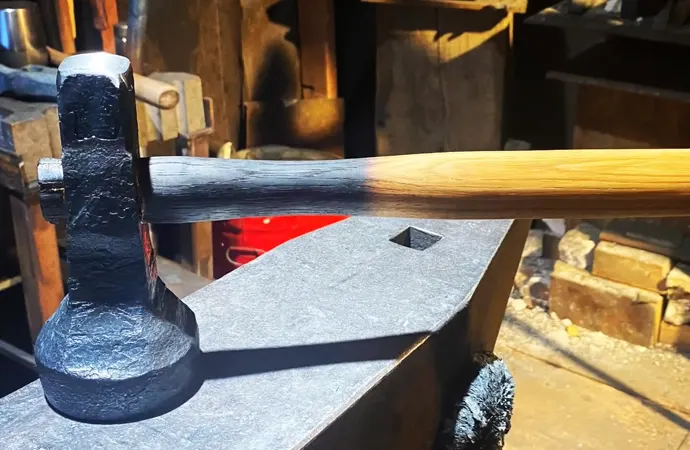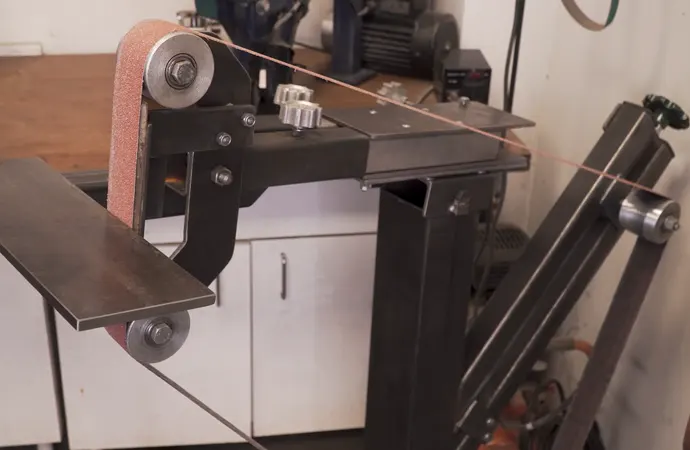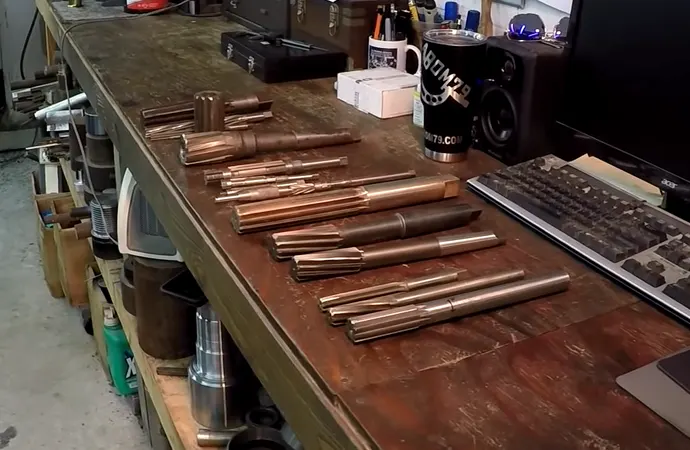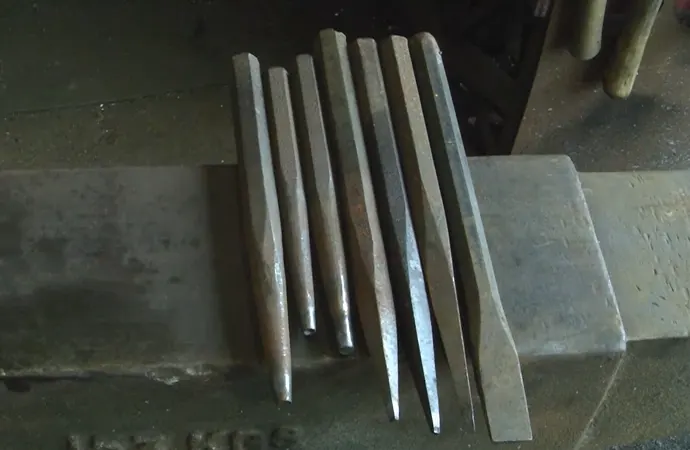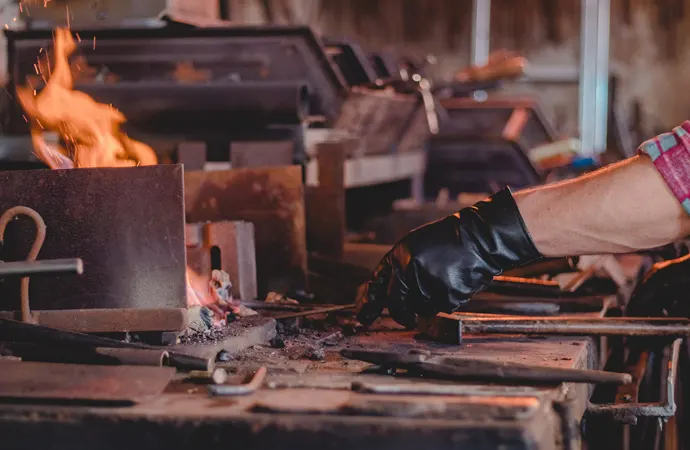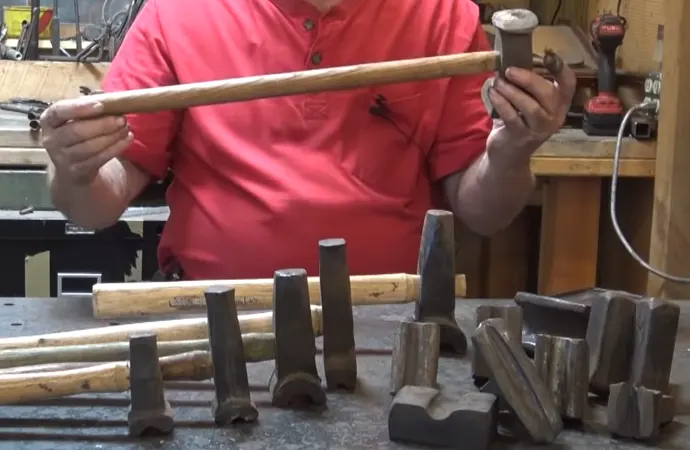21 Tools for Blacksmithing: Master the Craft like a Pro!
Blacksmithing is a creative and old craft that has been used in the design of many products.
Today, it is a profession that is highly artistic in nature and pays quite well too. If you are a beginner or looking into making money from the craft, it can be a challenge to decide on the right tools for blacksmithing.
You are set to master the blacksmithing art, all you need is high-quality tools to make your work easier.
Owning the right tools will help you take your blacksmithing practice to the next level. Even as a beginner you can practice and perfect your blacksmithing skills with these must-have 21 forging tools that you can easily purchase online or at a local store.
Let’s Get Down All Tools for Blacksmithing
1. Hammers
The normal hammer used by Carpenters won’t help you in altering a white-hot metal. In blacksmithing, you need to have several machinist hammers to be able to bend a hot metal.
For a start, you can get a cross pein hammer or a ball pein. These basic hammers are available at local stores.
2. Anvils
An anvil is a basic tool for blacksmithing that is designed with a hard, flat surface on which the metals are struck. It’s what helps you in shaping and molding all your metal works.
The anvil comes in different materials, which include steel and cast iron. When purchasing an anvil, it’s important to check its size and weight.
If you’re planning on forging small objects like blades and knives, a small anvil will work perfectly for you. But, if you would like to work on larger objects in the future then go for a large and heavy anvil.
3. Forges
This is one of the most essential pieces of equipment in blacksmithing. It involves the aspect of warm and hot forging processes. A forge helps a blacksmith to heat up a metal piece to a point where it can easily be forged.
Some of the metals feature very high deformation temperatures and hence, the only way to reshape them is by warm or hot forging.

4. Tongs
These are important blacksmith tools needed for holding and pulling up hot metals. They are created from iron or wrought steel. Tongs feature flat and smooth jowl surfaces that can’t scratch the metal piece.
In other words, tongs work as an extension of the hand.
READ More: 7 Biggest Blacksmithing Forums on The Web?
5. Chisels
Every blacksmith must have chisels for cutting hot and cold metal. They are characterized by a metal blade at one end. The shaped blade makes the tool great as it helps in cutting and carving the metals into different shapes.
Chisels come in various shapes and sizes. The chisels made for cutting cold metals are usually short and thick, while those made for cutting hot metals are thinner and longer.
A perfect chisel is made from steel and should contain 0.8% of carbon.
6. Drifts
This is also known as a drift pin or drift punch. A drift is designed like a tempered rod that helps in enlarging holes. You can find both round, octagonal, hexagonal, and other forms of drift.
When the metal is in a dull-red heat state, the drift is hammered through it to finish the size and shape of a hole. You
7. Vises
A vise is a nifty tool that will help you with the metal works. As you shop for a vise, you will come across machinist’s vise and post vise. A post vise is a perfect choice for blacksmithing tasks because it withstands hammering.
On the other hand, the machinist’s vise gets marred from repetitive hammer blows.
8. Clamps
Clamps are used to hold the hot metal firmly while it’s being hammered or twisted. The process requires very strong clamps to avoid any mistakes during smithing.
9. Fullers
Fullers are forging tools used for spreading metal. They feature rounded edges and are available in pairs. There is a bottom Fuller that is fitted into the anvil’s hole to create shoulders while forging tendons.
Similarly, the upper Fuller has a flat face and is placed against the heated metal.
10. Flatters
Flatters look like a hammer but it features rounded or sharp edges and flat faces. A flatter is placed on the metal piece while being struck with a hammer to smoothen the hammer marks or bumps from the final piece.
The flatters are often used to give the metal piece a superb finish.
11. Belt grinders
This is another finishing tool used to help in getting the best out of your metal piece. It’s a belt featuring an abrasive coating to smoothen the rugged and ugly surface resulting from repeated hammering and heating.
You may use sandpaper or filer, but this will be a manual process and wastes a lot of energy and time.
The touch of energy in the belt grinder makes the smoothening, removing, and sharpening of metal pieces a lot easier.
12. Reamers
Here is another essential blacksmithing tool that assists in enlarging already cut holes. On top of that, they can be used to get rid of burs resulting from cuttings.
The modern reamers feature highly precise cutting edges that are fitted radially around the cylindrical body axis. The reamer enlarges the hole with high accuracy leaving all the sides smooth.
Therefore, as a beginner, you need these reamers to create professional holes in the metal piece.
13. Punches
These blacksmithing tools work the same way as drifts, the only difference is that punches expand the holes with reduced material waste.
They come in different sizes and shapes. Using the smallest to the largest punch, the holes increase in both shape and size while removing the minimum metal.
Punches are designed in round, square, and other shapes to do the best job. The punches can be hammered for safety and to speed up the process.
They are very long to protect the blacksmith’s hands from heat reflection.
You can also find large punches that can easily be fitted with shafts.
14. Apron
A blacksmithing apron is a super classic piece of attire that is designed for protecting your body and clothes. Some blacksmiths don’t value an apron and so they rarely wear it when working.
Some hot tools may break and so an apron will prevent the body from serious damage and burns to the cloth. sparks and coals may also pose risk to the unprotected blacksmith.

The aprons are produced from leather and are designed with pockets for holding the lighter blacksmithing tools for quicker access.
15. Goggles
These are blacksmithing glasses that are very crucial in protecting your eyes from Sparks and other objects when working on forging metals. The best safety goggles for forging projects are created from didymium lenses.
These lenses prevent the eyes from straining by filtering the ultraviolet light produced by the superheated gases in the propane forge. If you fail to use the safety glasses, your eyes get damaged over time due to the gas forge light.
These goggles can also be used in glass-blowing projects to protect the eyes from a bright yellow light.
16. Gloves
The blacksmithing gloves are heat resistant and are a must-have piece of protection while handling hot metals. Also, the gloves should be made of cotton to avoid loss of grip when working with a hammer.
Whether you want to upgrade your pair of gloves or you’re just starting blacksmithing, you should check out those types of gloves recommended by other blacksmiths. It won’t be pleasing to buy a pair of gloves that will wear out within a week.
As a beginner, you may feel cheated and if two or a few other tools have disappointed you, you feel like quitting the adventure.
However, avoid soaking the gloves in water when they become hot because the sweat in the gloves may turn to steam. It’s advisable to have spare dry gloves.
Always put on your gloves to avoid vital damage to your arms and hands.
17. Earbuds
The forging projects produce a lot of noise that can damage your hearing aid. Many blacksmiths have fallen victim to severe tinnitus and hearing loss. Imagine working in a loud noise workstation every day for years, your ears won’t be lucky.
Most of these earbuds come with a band to minimize the heat that builds up while working in those high-temperature environments.
Therefore, as a beginner, it’s important to also focus on your ear protection when shopping for start-up blacksmithing tools.
It’s good to look for trustworthy ear protectors and especially those recommended by professional blacksmiths.
While buying these earbuds, you may encounter different types from various brands, so you should be wise to avoid investing your hard-earned cash in a low-quality item.
18. Wire brushes
Blacksmiths use these wire brushes to get rid of any unwanted contaminants that have accumulated on the metal surface during blacksmithing. They can be used on hot surfaces to clear the excess material to get a better finish during the forging.
However, while cleaning up the metals’ surface with the wire brush, it may leave some marks as a result of its coarse nature.
The wire brushes come in different sizes and types to suit different applications. Also, these wire brushes are more durable than regular brushes.
19. Swages
Although the blacksmith swage may not be the first priority for your forging projects, it is an essential part of the toolkit. A swage is a large and heavy block made of steel or cast iron that is used by the blacksmiths in molding, shaping, and sinking the metal piece.
The swage features different holes of different shapes including square, hexagonal, semi-circular, and many more.
Rather than using the stump to sink spoons and bowls, a blacksmith’s swage will serve the purpose better while saving your effort and time.
20. Pyrometers
As a blacksmith you need to have knowledge of how different metals are affected by different temperature levels; otherwise, you could destroy a very valuable metal piece.
Heating is the most essential component of forging and so it’s important to measure the temperature without getting close to the forge or relying on intuition.
A pyrometer will help in checking whether the metal piece has reached the forging temperature before you start hammering to save you time.
This remote-sensing thermometer measures the precise temperature of the surface without touching it, which saves the blacksmith from touching the red-hot surface accidentally.
This is not just for beginners, even professional blacksmiths can avoid severe burns and injuries by using it.
However, this type of equipment is quite expensive, so if you’re getting into blacksmithing as a hobbyist you may not think of investing much in a pyrometer.
Many blacksmiths prefer building their own pyrometer, while others go for the infrared thermometer.
21. Electric buffers
The electric buffers are simple machines used by blacksmiths to give the metal piece a professional standard finish without applying too much force. This tool creates an elegant, polished finish to the rugged, ugly metal piece.
It smoothes all the imperfect parts resulting from hammering to produce a uniform design. Even with the rustic look of the metal, buffing makes its surface a better professional appearance.
Most of the blacksmith electric buffers available in the market are easy to use and their design favors both newbies and professional blacksmiths.
Being a professional you want your customers to come for more products from you, so you have to make the best.
Bottom line
There are a whole lot of blacksmith tools that you will come across while shopping, but this is a list of the most essential tools that you need to have to start blacksmithing.
You don’t have to purchase every blacksmithing tool you come across because each time there will be a new tool in the market as blacksmithing tools are evolving every day.
Furthermore, if you feel the need to upgrade your forging skills you’re free to get more advanced tools. Now that you’re equipped with the knowledge of the basic blacksmith tools, it’s time to enjoy making your piece of art.


